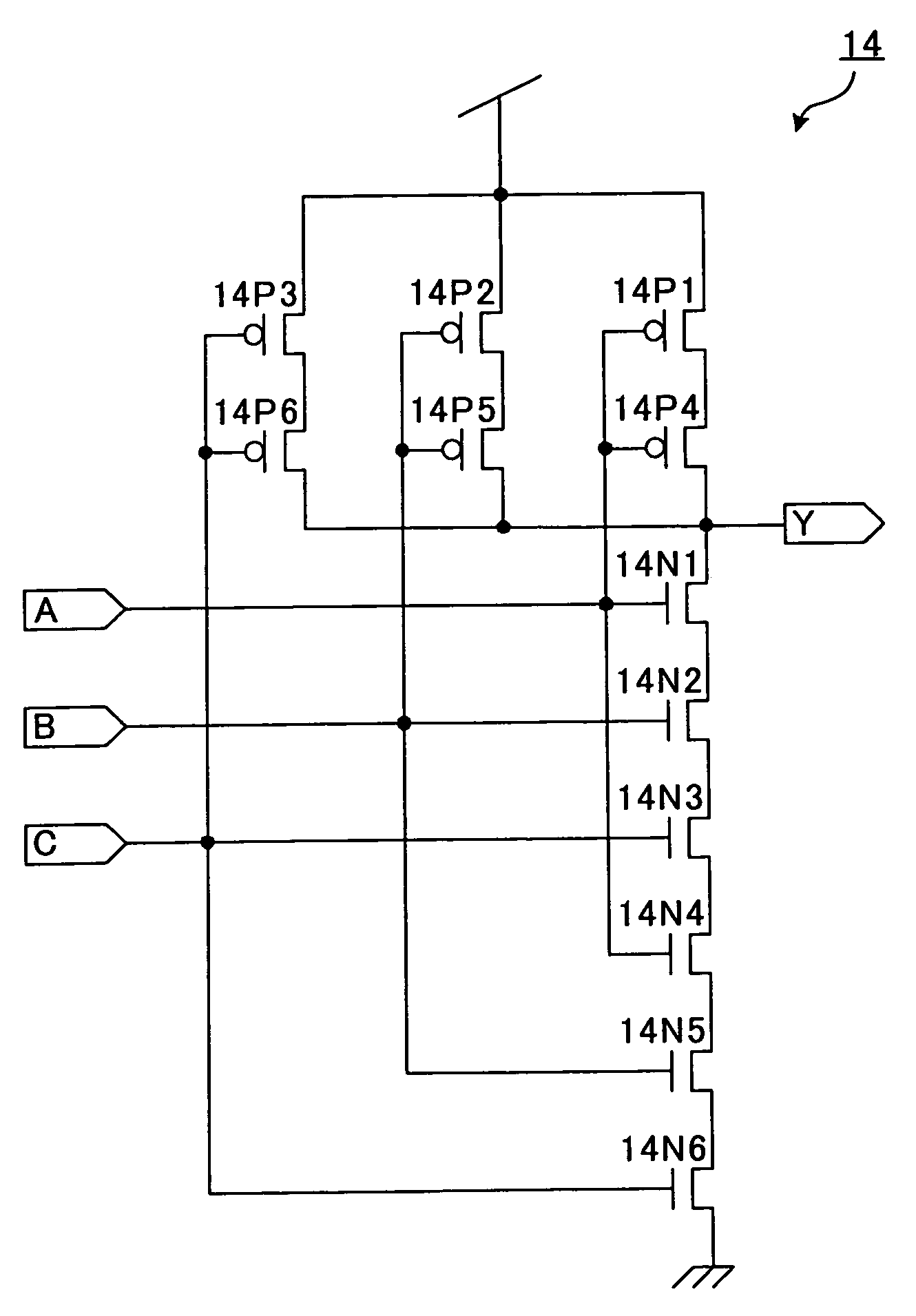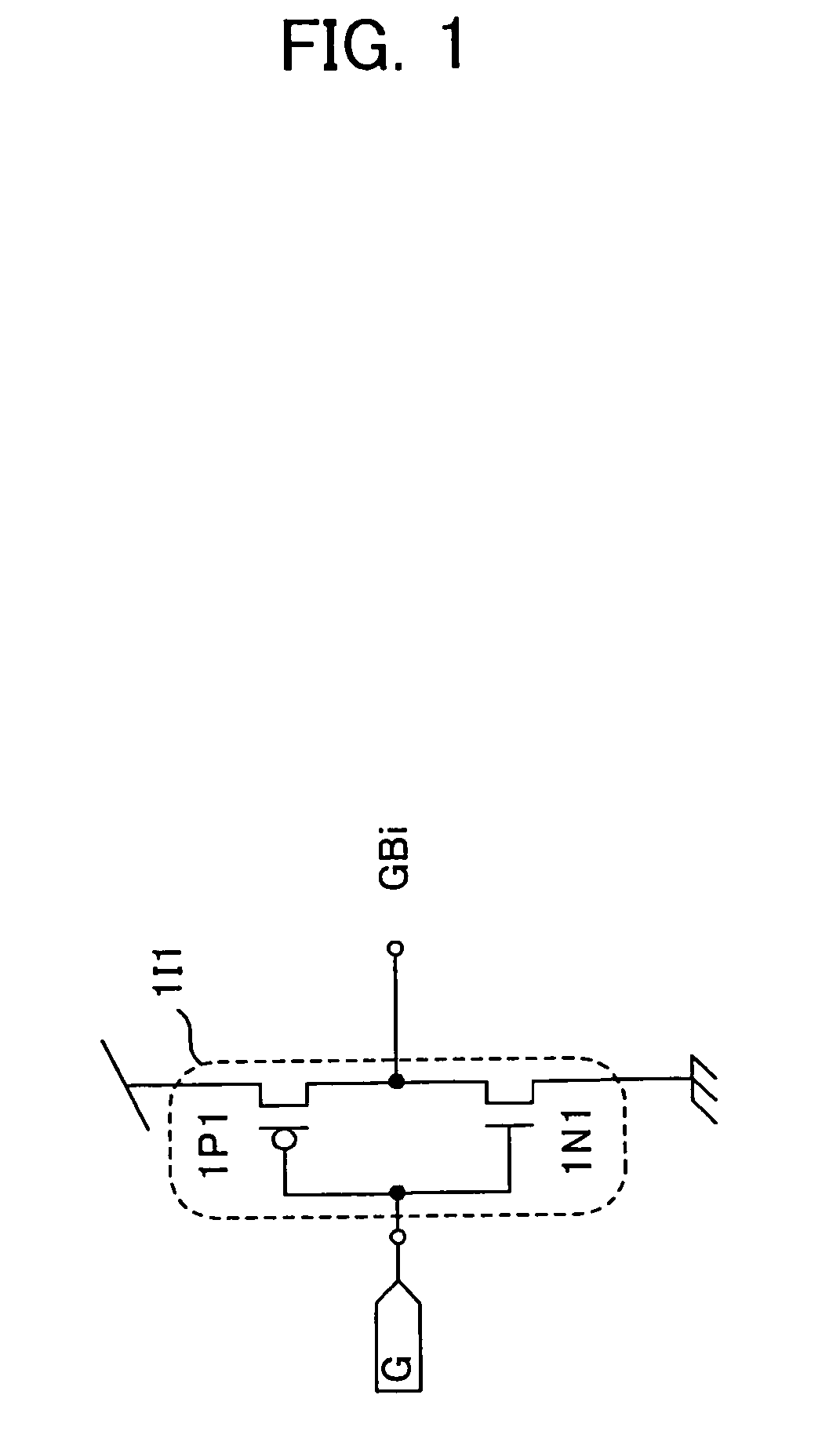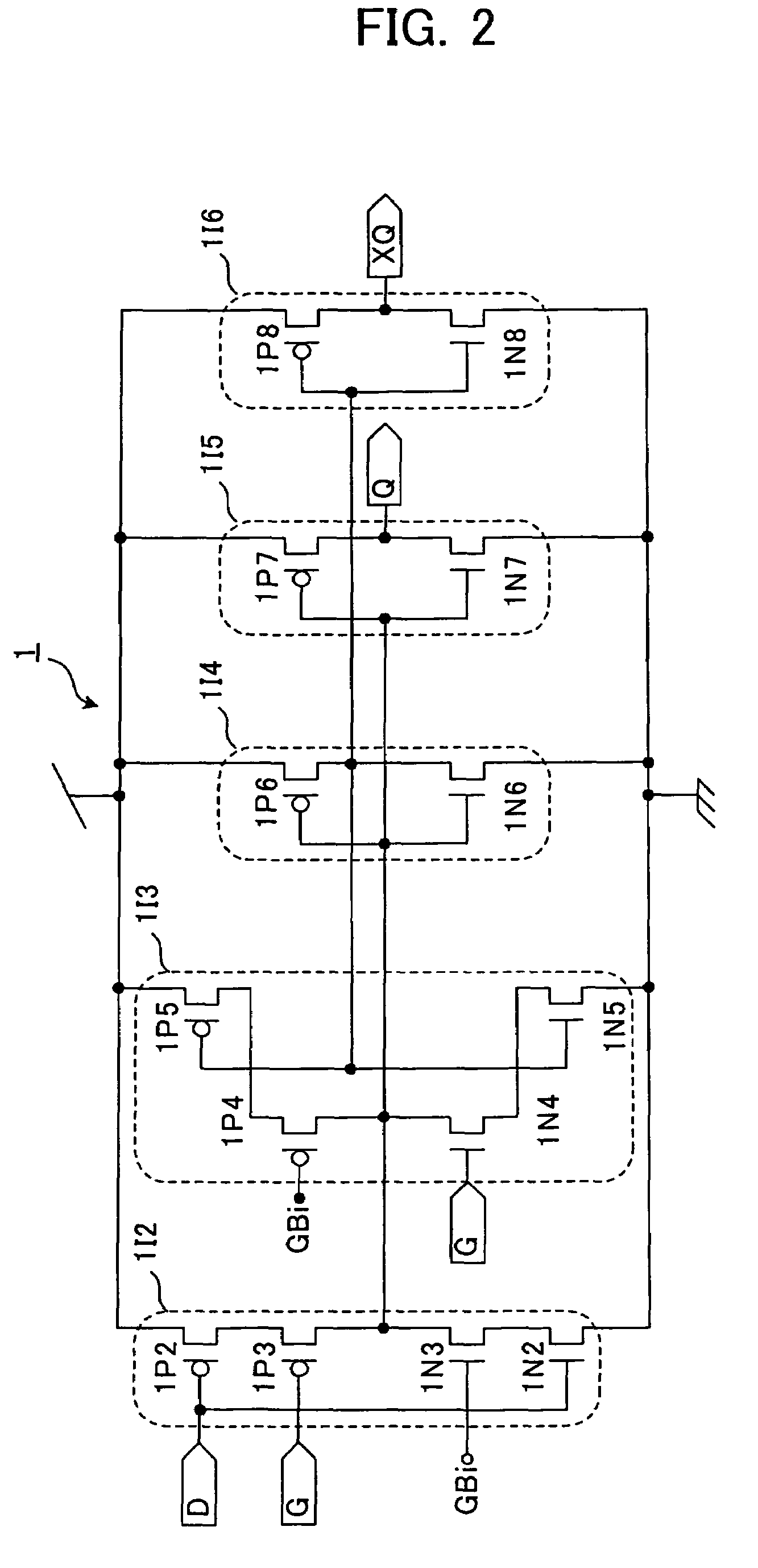Single-event-effect tolerant SOI-based inverter, NAND element, NOR element, semiconductor memory device and data latch circuit
a soi-based inverter and memory device technology, applied in logic circuits, pulse techniques, reliability increasing modifications, etc., can solve problems such as serious malfunction or inversion of stored information, inability to realistically approach, and malfunction of elements, so as to and effectively prevent the occurrence of malfunction
- Summary
- Abstract
- Description
- Claims
- Application Information
AI Technical Summary
Benefits of technology
Problems solved by technology
Method used
Image
Examples
first embodiment
[0052](Configuration of Inverter of the Present Invention)
[0053]With reference to the circuit diagrams (FIGS. 4 to 6), respective configurations and operations of an inverter and a data latch circuit according to one embodiment of the present invention will now be described. FIG. 4 is a diagram showing the configuration of an inverter 3I including a double-structured transistor, according to a first embodiment of the present invention. In the inverter 3I, a (p-channel MOS) transistor 3P1 corresponding to the transistor 1P1 in the inverter 1I1 is combined with a (p-channel MOS) transistor 3P2 having a channel of the same conductive type as that thereof (p-channel MOS) and a gate connected to a gate thereof, in such a manner that they are connected in series with respect to a source or drain line, so as to form a double structure. The two transistors 3P1, 3P2 have a common gate, and their source or drain line to be controlled by the gate are connected in series with each other. Thus,...
second embodiment
[0061](Memory Element of the Present Invention)
[0062]A memory element according to a second embodiment of the present invention will be described. A storage node can be obtained by cross-connecting respective outputs and inputs of two inverters directly or indirectly through a switching gate. For example, a memory element with such a storage node includes a SRAM (Static RAM), a flip-flop circuit and a latch circuit. Although not shown, the memory element according to the second embodiment has a storage node comprising at least two inverters each having the same configuration as that of the inverter 3I according to the first embodiment. This makes it possible to achieve a memory element having enhanced SEE tolerance. In this memory element, each of the inverters forming the storage mode has the same operation as that of the inverter 3I according to the first embodiment.
third embodiment
[0063](Data Latch Circuit of the Present Invention)
[0064]A data latch circuit 4 according to a third embodiment of the present invention will be described below. Firstly, the configuration of this data latch circuit 4 will be described. FIG. 6 is a circuit diagram of the data latch circuit 4. A buffer circuit 4B illustrated in FIG. 5 is used in combination with the data latch circuit 4 to shape a waveform of a clock signal G and an inverted clock signal GBi which are input into the data latch circuit 4. The buffer circuit 4B includes an inverter 4I1 and an inverter 4I2 which are connected to each other in a cascade arrangement. Viewed as a whole, the buffer circuit 4B generally comprises a clocked inverter 413 serving as an input stage, a transmission gate 4S1, the inverter 4I4 and the inverter 4I2.
[0065]The clocked inverter 4I1 comprises a p-channel MOS transistor 4P3, a p-channel MOS transistor 4P4, a p-channel MOS transistor 4P5, an n-channel MOS transistor 4N5, an n-channel MOS...
PUM
 Login to View More
Login to View More Abstract
Description
Claims
Application Information
 Login to View More
Login to View More - R&D
- Intellectual Property
- Life Sciences
- Materials
- Tech Scout
- Unparalleled Data Quality
- Higher Quality Content
- 60% Fewer Hallucinations
Browse by: Latest US Patents, China's latest patents, Technical Efficacy Thesaurus, Application Domain, Technology Topic, Popular Technical Reports.
© 2025 PatSnap. All rights reserved.Legal|Privacy policy|Modern Slavery Act Transparency Statement|Sitemap|About US| Contact US: help@patsnap.com



